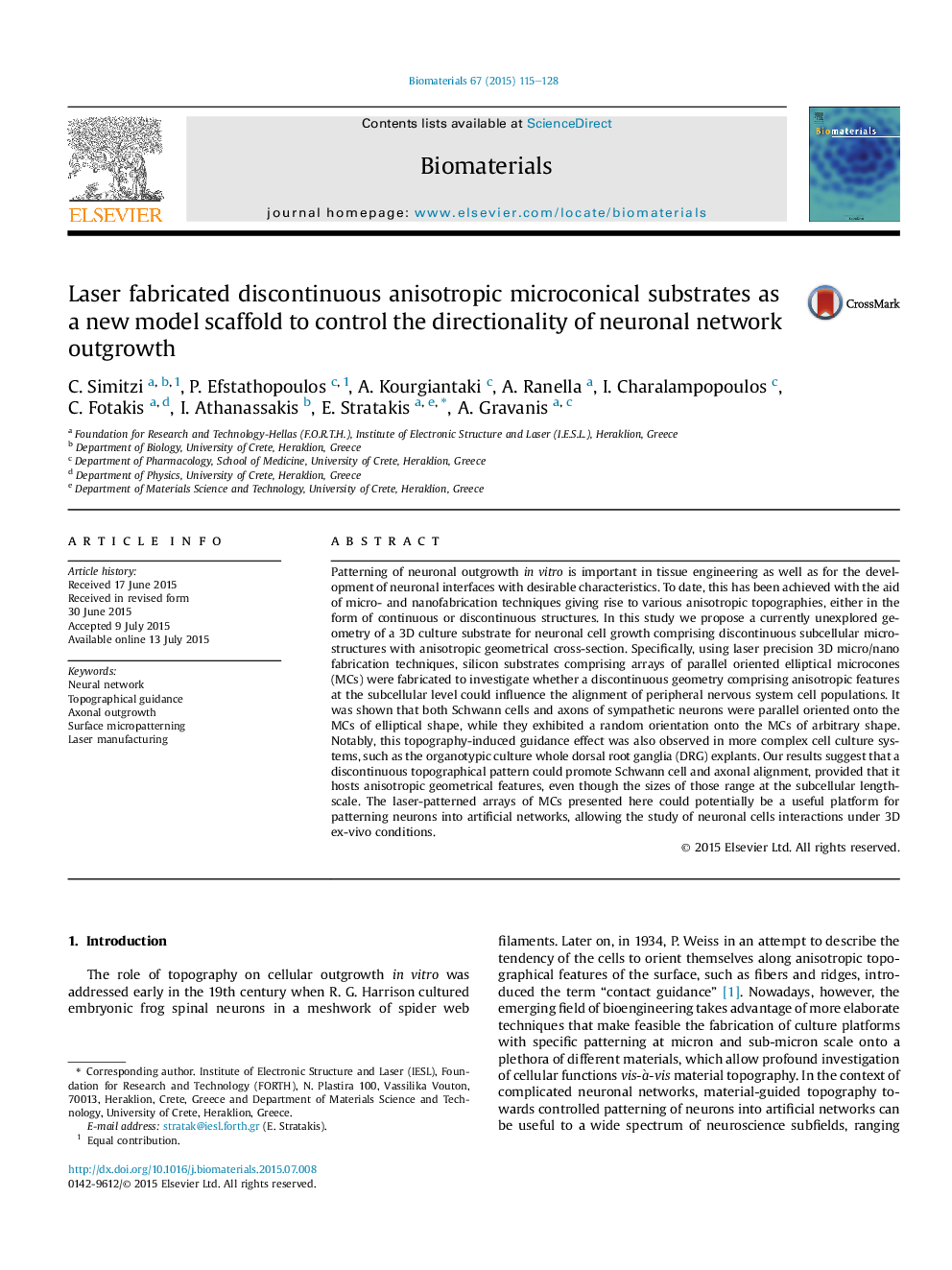| Article ID | Journal | Published Year | Pages | File Type |
|---|---|---|---|---|
| 6485460 | Biomaterials | 2015 | 14 Pages |
Abstract
Patterning of neuronal outgrowth in vitro is important in tissue engineering as well as for the development of neuronal interfaces with desirable characteristics. To date, this has been achieved with the aid of micro- and nanofabrication techniques giving rise to various anisotropic topographies, either in the form of continuous or discontinuous structures. In this study we propose a currently unexplored geometry of a 3D culture substrate for neuronal cell growth comprising discontinuous subcellular microstructures with anisotropic geometrical cross-section. Specifically, using laser precision 3D micro/nano fabrication techniques, silicon substrates comprising arrays of parallel oriented elliptical microcones (MCs) were fabricated to investigate whether a discontinuous geometry comprising anisotropic features at the subcellular level could influence the alignment of peripheral nervous system cell populations. It was shown that both Schwann cells and axons of sympathetic neurons were parallel oriented onto the MCs of elliptical shape, while they exhibited a random orientation onto the MCs of arbitrary shape. Notably, this topography-induced guidance effect was also observed in more complex cell culture systems, such as the organotypic culture whole dorsal root ganglia (DRG) explants. Our results suggest that a discontinuous topographical pattern could promote Schwann cell and axonal alignment, provided that it hosts anisotropic geometrical features, even though the sizes of those range at the subcellular lengthscale. The laser-patterned arrays of MCs presented here could potentially be a useful platform for patterning neurons into artificial networks, allowing the study of neuronal cells interactions under 3D ex-vivo conditions.
Related Topics
Physical Sciences and Engineering
Chemical Engineering
Bioengineering
Authors
C. Simitzi, P. Efstathopoulos, A. Kourgiantaki, A. Ranella, I. Charalampopoulos, C. Fotakis, I. Athanassakis, E. Stratakis, A. Gravanis,
